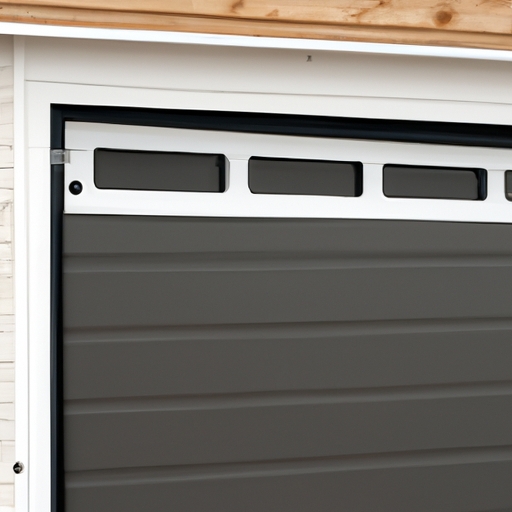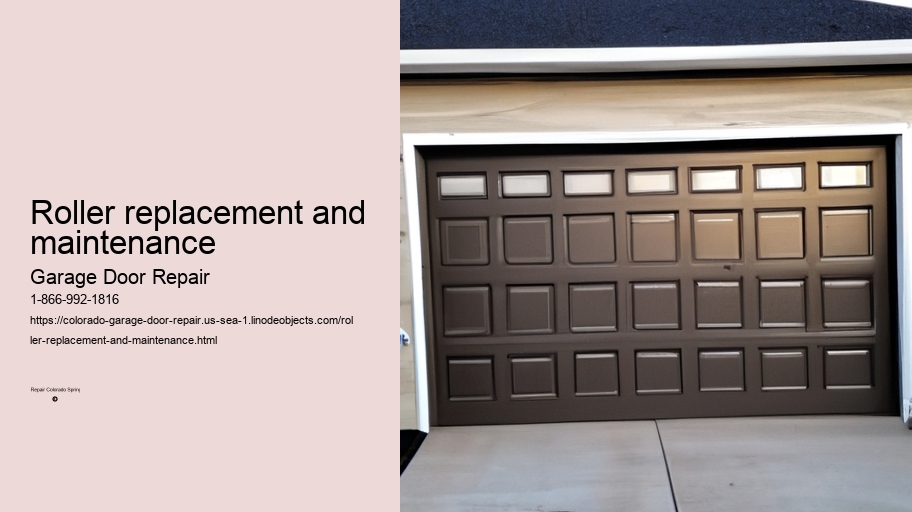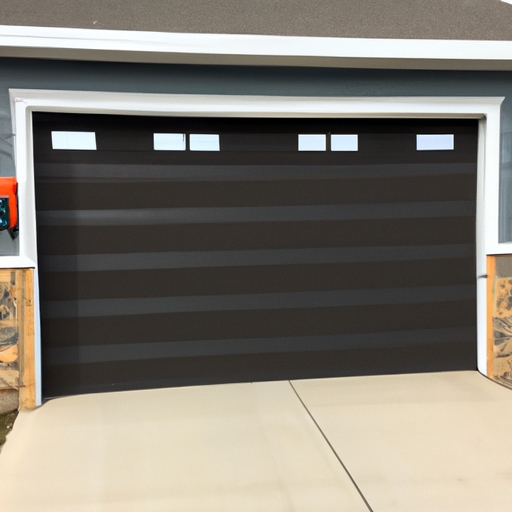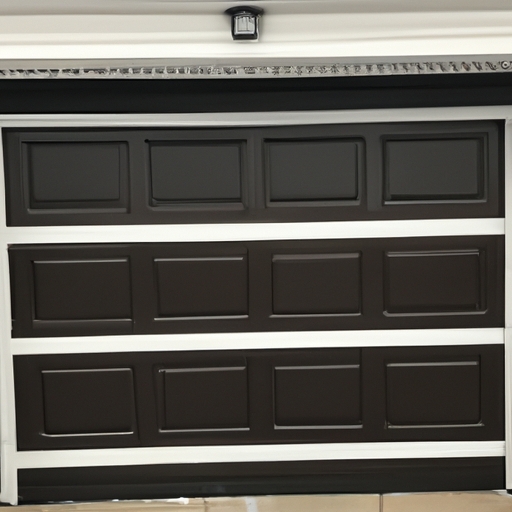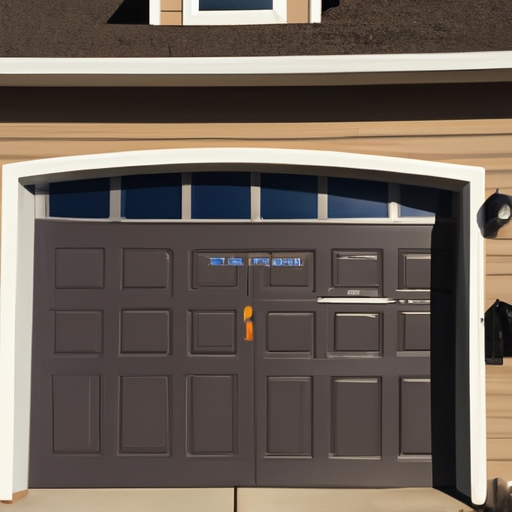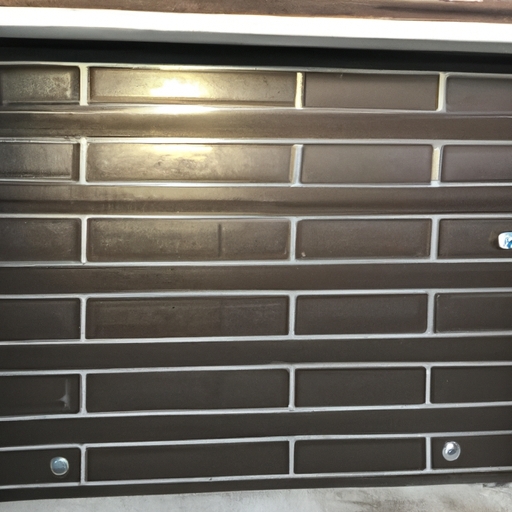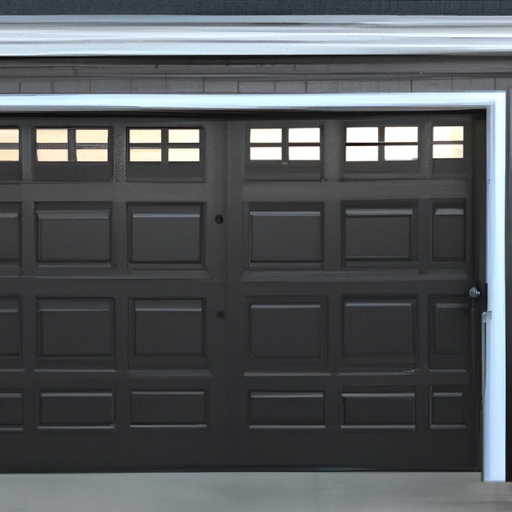Importance of regular inspection and maintenance of garage door rollers
Regular inspection and maintenance of garage door rollers is of utmost importance. Neglecting this crucial task can lead to serious consequences such as accidents and costly repairs. (However), many homeowners fail to recognize the significance of roller replacement and maintenance. This essay aims to shed light on the reasons why regular inspection and maintenance should not be overlooked.
Firstly, let us discuss the potential dangers that arise from neglecting garage door roller maintenance. When rollers become worn out or damaged, they may not function properly, causing the door to malfunction unexpectedly. This could result in accidents that pose a serious threat to both people and property! Imagine the horror of a garage door suddenly collapsing or closing on someone due to neglected roller issues. To avoid such unfortunate incidents, it is crucial to schedule routine inspections and promptly address any roller problems.
Moreover, regular inspection and maintenance save you from unnecessary expenses. By detecting roller issues early on, you can prevent them from escalating into more significant problems that require costly repairs or even full replacement of your garage door system. It's always better to invest in preventive measures rather than waiting for a complete breakdown! Additionally, proper lubrication during maintenance helps extend the lifespan of your rollers, reducing the need for frequent replacements.
Furthermore, neglecting roller maintenance can negatively impact the overall performance of your garage door system. Damaged or worn-out rollers put strain on other components like hinges, springs, and tracks. Consequently (as a result), these parts may also wear out faster or become damaged themselves - leading to additional repair expenses! By regularly inspecting and maintaining your rollers, you ensure smooth operation and longevity for your entire garage door system.
In conclusion (To sum up), regular inspection and maintenance of garage door rollers is essential for safety reasons,! avoiding expensive repairs,! improving overall performance,!and prolonging the life of your garage door system.! Don't underestimate the significance of this seemingly small task; prioritize roller replacement and maintenance today for a secure and hassle-free garage experience.
Signs indicating the need for roller replacement, such as excessive noise or difficulty in opening/closing the door
Roller replacement and maintenance are crucial for ensuring the smooth functioning of doors. When it comes to signs indicating the need for roller replacement, one of the clear indicators is excessive noise emanating from the door. (Oh my goodness!) This noise can be quite bothersome and can hinder peaceful living in a home or efficient working in a commercial space.
Another sign that points towards roller replacement is difficulty in opening and closing the door. (Seriously!) If you find yourself struggling to open or close your door smoothly, it's time to check the rollers. Faulty rollers can cause friction, making it hard to operate the door properly. Nobody wants to wrestle with their own door every day! (No way!)
Furthermore, if you notice that your door is not aligned correctly on its track, it could be due to worn-out rollers. Misalignment can lead to further damage and may even compromise the security of your premises. Taking prompt action by replacing those worn-out rollers will save you from potential troubles down the line.
Additionally, keep an eye out for any visible damages on the rollers themselves. Cracks, dents, or excessive wear and tear are all red flags indicating that roller replacement is necessary. Neglecting such damages may result in complete malfunctioning of the doors and require costly repairs later on.
In conclusion,(to sum up) signs like excessive noise, difficulty in opening/closing doors, misalignment issues, and visible damages serve as strong indications that roller replacement should be considered promptly. By addressing these signs early on,(firstly) you can ensure optimal functionality of your doors while avoiding any unnecessary inconveniences and expenses.(finally) So don't ignore those warning signs!(definitely) Make sure you keep a close eye on your rollers' condition!(absolutely)
Step-by-step guide on how to replace garage door rollers, including necessary tools and safety precautions
Replacing garage door rollers is an essential task for the maintenance of your roller system. With a step-by-step guide, you can easily accomplish this (challenging) task. It is important to keep in mind the necessary tools and safety precautions to ensure a successful replacement process. So, let's get started and make your garage door rollers roll like new again!
Firstly, gather all the required tools for this endeavor. You will need a pair of pliers, a flathead screwdriver, and some lubricating oil. These tools are imperative for removing the old rollers and installing the new ones properly.
Now, before beginning any work on your garage door, it is vital to take safety precautions seriously! Make sure to wear protective gloves and goggles to prevent any possible injuries during the roller replacement process. Safety should always be your top priority!
To start with the replacement procedure, close your garage door completely. This will ensure that there is no tension or pressure on the roller system while you work on it (although). Next, locate one end of the roller track where you want to begin replacing the rollers.
Using your flathead screwdriver, gently pry open the hinge holding each roller in place (however). Once all hinges are open (despite), carefully slide out each old roller from its respective slot in the track using pliers if necessary.
Now comes the exciting part - installing those shiny new rollers! Take one of the new rollers and insert it into its designated slot on the track (wow!). Ensure that it fits snugly without any wobbling or looseness. Repeat this step for all remaining rollers along the track until they are securely in place.
Once all new rollers are installed (finally), give them a good dose of lubricating oil to enhance their smooth operation. Apply a few drops of oil directly onto each roller and allow it to penetrate into their bearings effectively.
Congratulations! You have successfully replaced your garage door rollers and completed the maintenance process. Now, open and close your garage door a few times to test the smoothness of the roller system (yay!). If everything is functioning perfectly, pat yourself on the back for a job well done!
To wrap it all up, properly maintaining your garage door rollers is crucial for their longevity and optimal performance. By following this step-by-step guide and taking necessary safety precautions, you can easily replace your rollers without any hassle. So get ready to enjoy a smoothly rolling garage door once again!
Tips for selecting the right type and size of rollers for your specific garage door
When it comes to roller replacement and maintenance for your garage door, selecting the right type and size of rollers is crucial! (Wow!) Choosing the (incorrect) rollers can lead to various issues such as noisy operation, frequent breakdowns, and even damage to your garage door tracks. Therefore, it is essential to (make sure) you choose the appropriate rollers for your specific garage door.
To begin with, you need to consider the type of rollers that best suit your needs. There are typically two types available: nylon and steel rollers. While both have their advantages and disadvantages, nylon rollers tend to be quieter and require less maintenance compared to steel ones. However, if you have a heavier garage door or prefer durability over noise reduction, steel rollers might be a better choice.
Once you've decided on the roller type, it's time to determine the correct size. Roller sizes are commonly identified using numbers like 2", 3", or 4". To ensure proper fitment, refer to your garage door manufacturer's specifications or consult a professional (like me!). Incorrectly sized rollers can cause unnecessary strain on your garage door opener system and may result in premature wear and tear.
Furthermore, keep in mind that not all garages doors are created equal. Each has its own unique weight distribution and operational requirements. Therefore, what works for one garage door may not work for another! Take into account factors such as the material used for the garage door panels and its overall weight when selecting the appropriate roller size.
In conclusion (you know), selecting the right type and size of rollers is vital for maintaining a smooth-running garage door. By choosing wisely (yay!), you can avoid unnecessary repairs down the line while ensuring optimal performance of your garage door system. So don't overlook this important aspect of roller replacement and maintenance!
Transition phrase: Moving on from selecting the right type of roller...
Common mistakes to avoid during roller replacement process
Roller replacement and maintenance are crucial aspects of maintaining smooth operation (instead) of a machine. However, many individuals make common mistakes during this process that can lead to unnecessary complications (!). It is important to be aware of these errors in order to avoid them and ensure the longevity of your rollers.
One common mistake that people often make is neglecting to properly clean the roller before replacing it. This can result in dirt and debris getting trapped between the roller and its housing, causing excessive wear and tear over time. To prevent this issue, always take the time to thoroughly clean the roller with a suitable solvent or cleaner. (Also), remember to dry it completely before installing the new one.
Another frequent error is using incorrect lubrication during the roller replacement process. Lubrication plays a vital role in reducing friction and ensuring smooth movement (!). Using the wrong type or amount of lubricant can lead to inadequate protection for your rollers, thus compromising their performance (!). Therefore, it is crucial to consult the manufacturer's recommendations and use the appropriate lubricant for your specific roller.
Furthermore, failing to align the roller properly after replacement is another mistake people commonly make. Misalignment can cause uneven wear on both ends of the roller, leading to premature failure (!). To avoid this issue, carefully follow the instructions provided by the manufacturer regarding alignment techniques. Take your time and double-check that everything is aligned correctly before finalizing the installation process.
In addition, not paying attention to proper tension adjustment can also result in problems with your rollers (!). Insufficient tension may cause slippage or even dislodgement during operation (!), while excessive tension can accelerate wear on both rollers and belts! Therefore, always refer to the equipment manual or seek professional advice when adjusting tension for optimal performance.
In conclusion, avoiding these common mistakes during roller replacement and maintenance processes will greatly contribute to prolonging their lifespan (!). Ensure proper cleaning prior to installation, use correct lubrication, align the rollers accurately, and pay attention to tension adjustment (!). By doing so, you can maintain smooth operation and minimize the need for frequent replacements (!). Remember, a little extra care goes a long way in maximizing the efficiency of your rollers!
Additional tips for maintaining the longevity of new rollers, such as lubrication and cleaning
Roller replacement and maintenance are essential for (a) long-lasting performance of rollers. To ensure their longevity, it is crucial to follow additional tips for proper lubrication and cleaning. Proper lubrication prevents friction, which can lead to wear and tear, while regular cleaning removes dirt and debris that can hinder the roller's smooth operation.
To begin with, lubricating your rollers regularly is key! Applying a suitable lubricant will reduce friction (and) increase their lifespan. When choosing a lubricant, opt for one specifically designed for rollers (rather than using any random product). Apply the lubricant evenly across the roller surface, ensuring all areas are well-coated. This will help prevent rusting and keep the rollers running smoothly.
In addition to lubrication, regular cleaning is equally important! Neglecting cleanliness can result in unwanted buildup of dirt and debris on the rollers. Use a clean cloth or brush to remove any loose particles from the roller surface. Avoid using excessive force when cleaning as this could damage the delicate components.
Furthermore, periodic deep cleaning should be performed to maintain optimal performance! Use a mild detergent mixed with water to gently cleanse the roller surfaces. Make sure to thoroughly rinse off any residue after washing (so as not) to leave behind harmful chemicals that could degrade the rollers over time.
Moreover, don't forget about inspecting your rollers periodically! Check for any signs of damage or wear such as cracks or uneven surfaces. If you notice any issues, promptly replace the affected rollers (to avoid further complications).
To conclude, maintaining the longevity of new rollers involves proper lubrication and regular cleaning practices! By following these additional tips diligently (!), you can ensure that your rollers operate smoothly and last for an extended period of time without unnecessary wear or damage. Remember to choose appropriate lubricants (!) and avoid neglecting necessary maintenance tasks – it will be worth it in the long run!
Transition phrase: Moving on to another important aspect...
